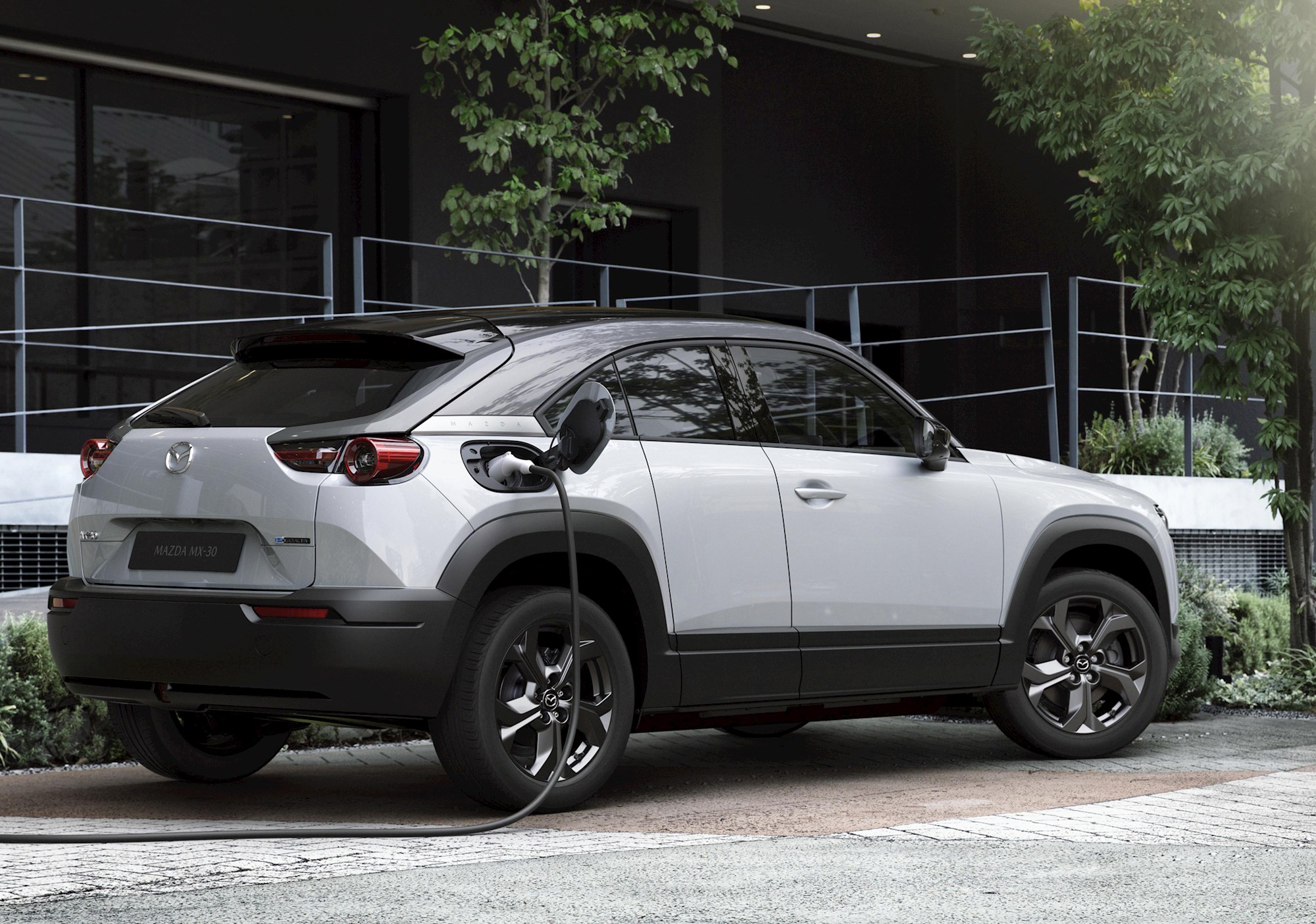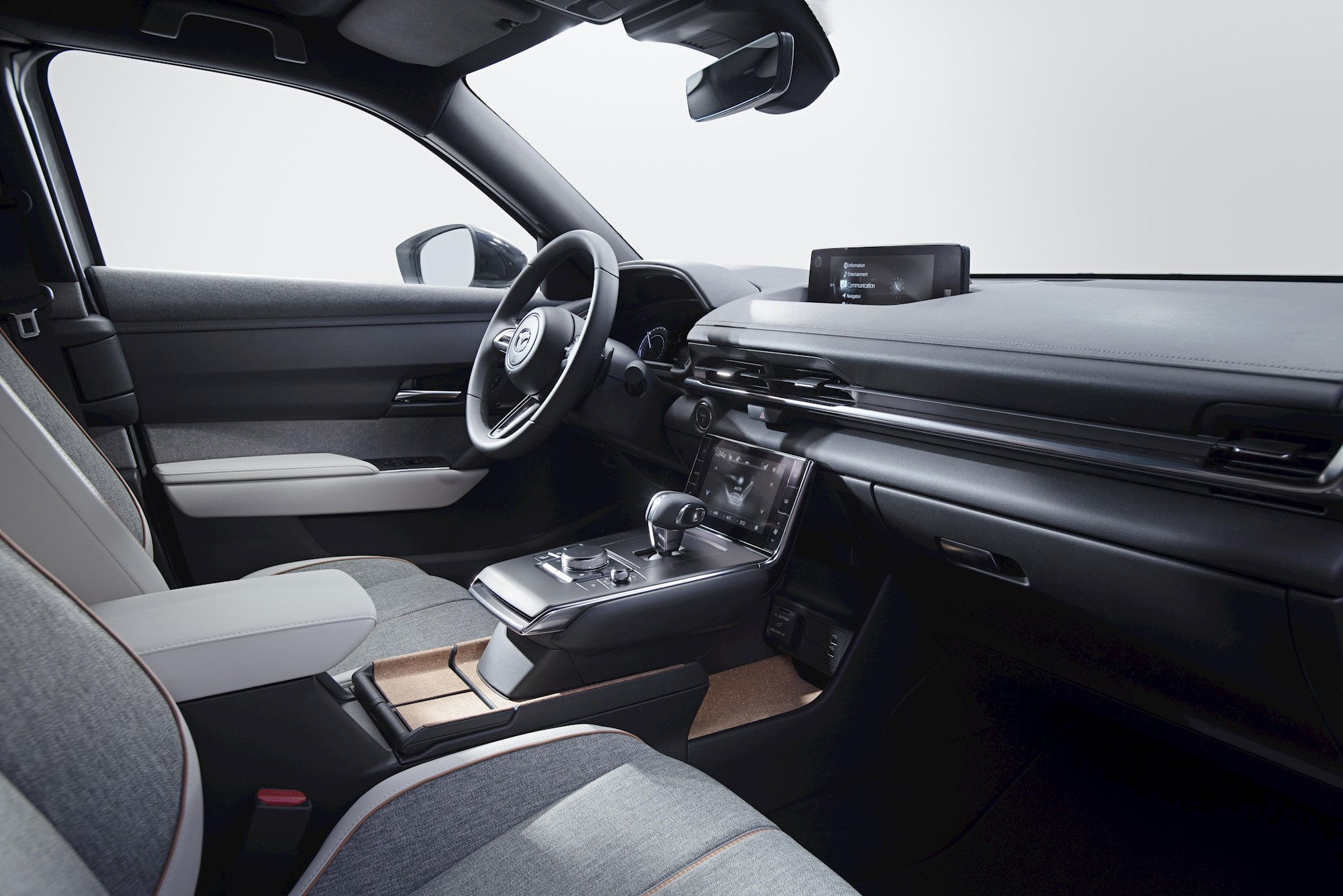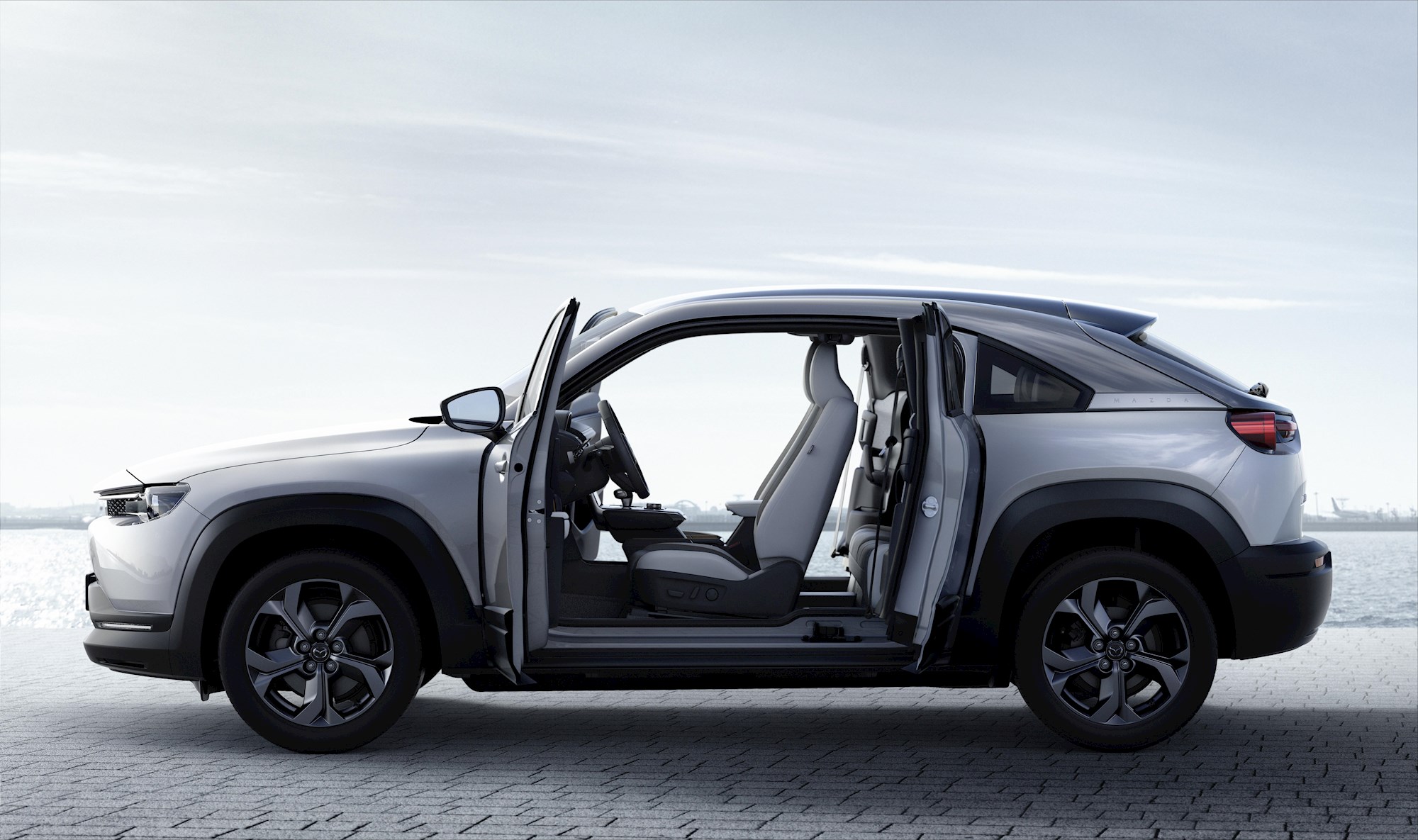Mazda’s electric vehicle, the MX-30, was unveiled today at the Tokyo Motor Show. Put an immediate tick in the “breakthrough” column for the car giant. Using a water cooled lithium ion battery to power the car makes it the first time Mazda has entered the field of electric vehicles, or EVs.
What made the reveal more startlingly was that the more you learned about the MX-30 the more innovations were revealed.

Some will surprise the purist. What Mazda call their Kodo design, seeking a look of solidity, means they’ve dropped the signature wing that is used on all other models in their line-up.
There been suggestions in the past that too many EVs looked like the mechanical version of a silverbeet smoothie, so determined to be politically correct a driver ran the risk of dozing off just looking at the car.
Read more: Mazda reveals its electrifying entrance to the EV world
No chance of that with the MX-30. Hell, just getting into the MX-30 is different. There are no pillars between the front and rear doors. You open the front door first, out to a big 82 degree angle, and then the back door opens in the opposite direction, giving extraordinary access to the back seat.
Parents of the world will come to bless the freestyle doors idea. For example, the layout and the absence of a centre pillar make it possible to bring a stroller right up beside the rear seat and comfortably put a baby into a child seat while maintaining eye contact.
While we’re talking of doors, the door grips, like the tray section of the console between the driver and front passenger seats, are made of cork. Because no trees are cut down and only the bark is stripped away to obtain the material, cork, Mazda point out, is a naturally derived product with low environmental impact.

But wait, there’s more. The MX-30 uses cork left over from the production of cork bottle stoppers. To ensure the durability needed for use as car parts, Mazda developed a dedicated coating and a special technique to process the cork and its base material at the same time.
The material also pays tribute to the company’s heritage by harkening back to Mazda’s founding in 1920 as the Toyo Cork Kogyo Co., Ltd.
Read more: The best Mazda yet? Auckland to Wellington (and back) in the new Mazda3
For the feel of the 21st century the MX-30 uses a 7-inch touchscreen display at the front of the console. When the driver opens the door and gets into the car, a subtly changing graphic appears on the screen. The graphic changes look depending on the time of day and the temperature. Once the car is switched on, it displays the air-conditioning controls and lets the driver know that the car is ready to go.

And it will go. Last month Driven’s Oskar Alley flew to Norway, and had the chance to put the MX-30 (its power unit hidden inside the bodywork and chassis of a CX-30 SUV), through its paces. His immediate reaction then? “This car is bloody swift – the power delivery is surprisingly good, not just for an EV but even for a petrol version. The throttle response is equally superb and subtle, delivering plenty of power.”
Range and power figures haven't been confirmed in full by the Japanese manufacturer, but what is known that its 2-SkyActiv powetrain includes a 35.3kWh lithium-ion battery pack, with the ability to be charged using AC power or rapid-charged on DC power.
What makes it game, set, and match for the MX-30 is that the look and feel of the car are as dramatic as its performance.


























